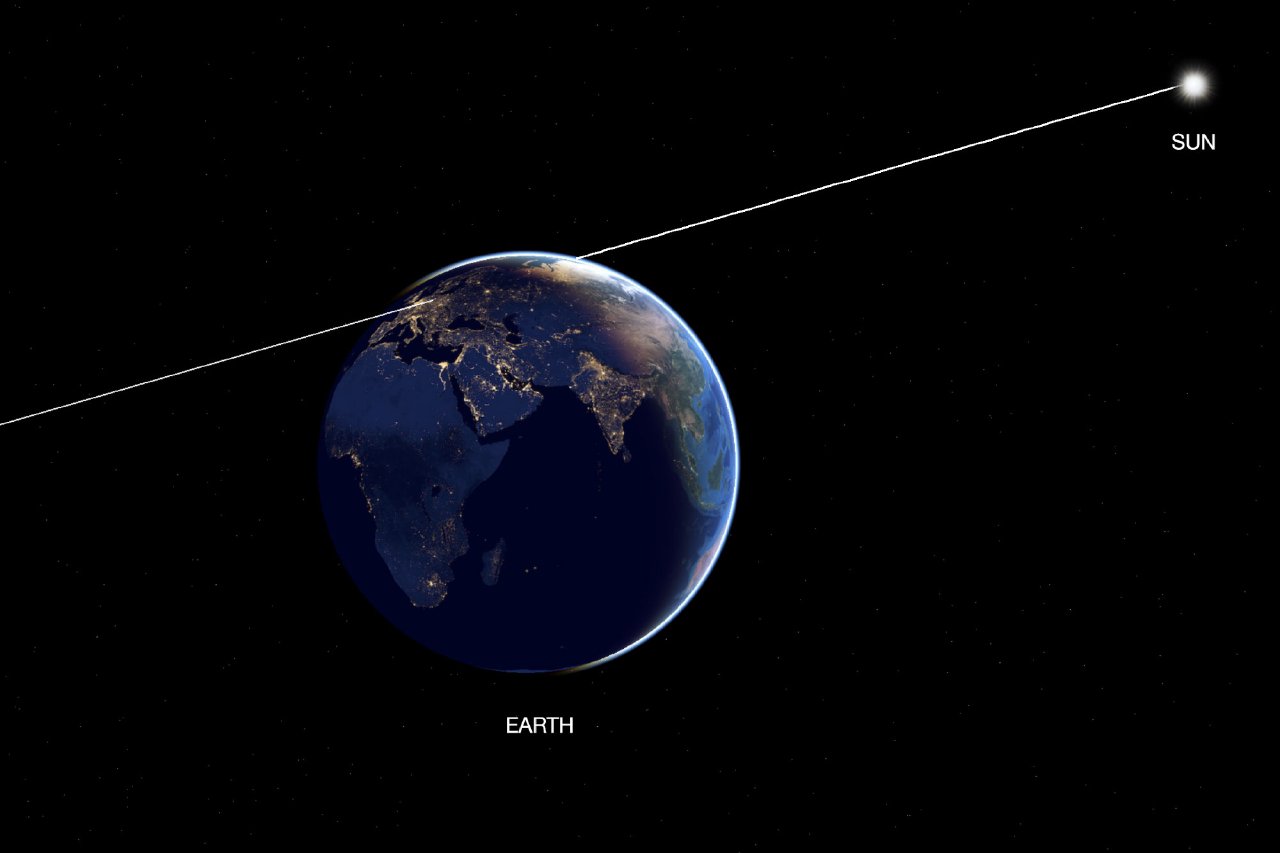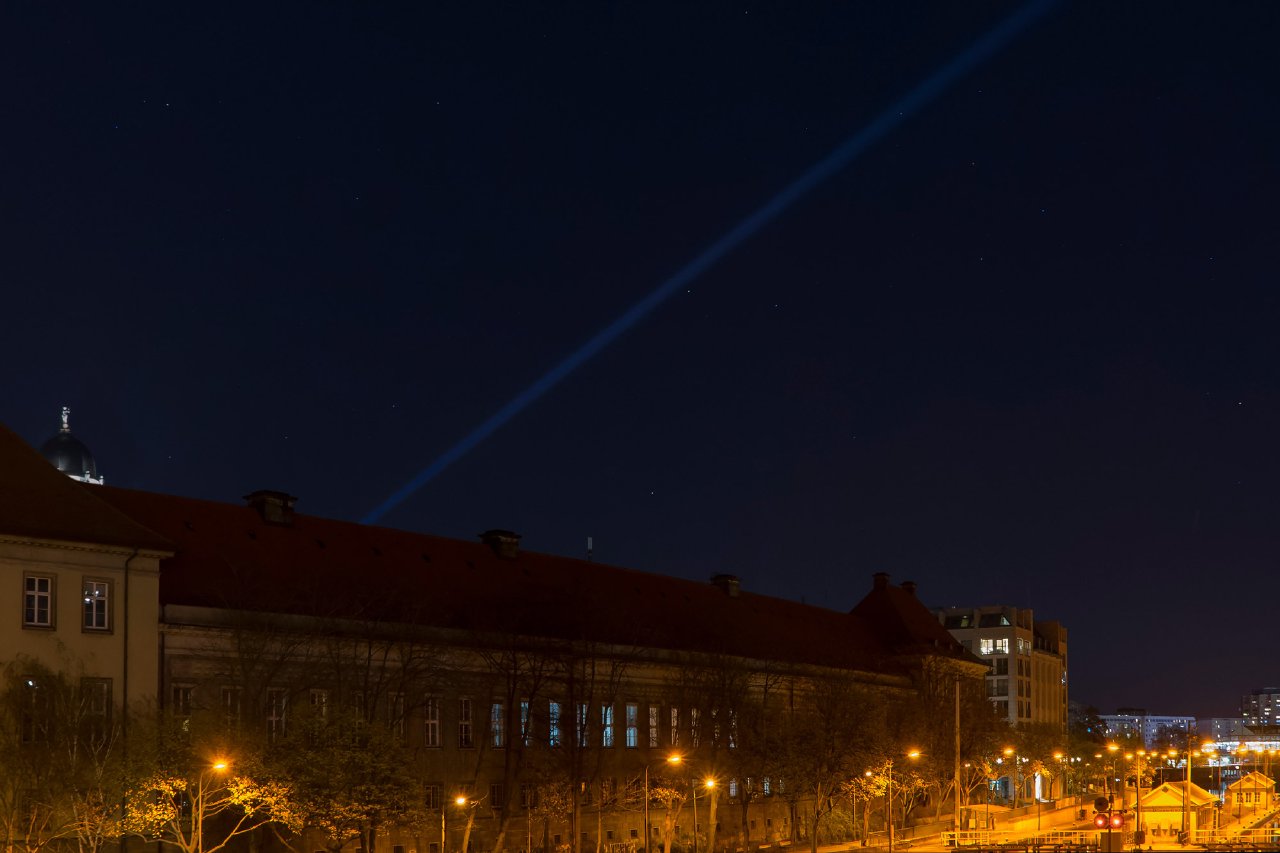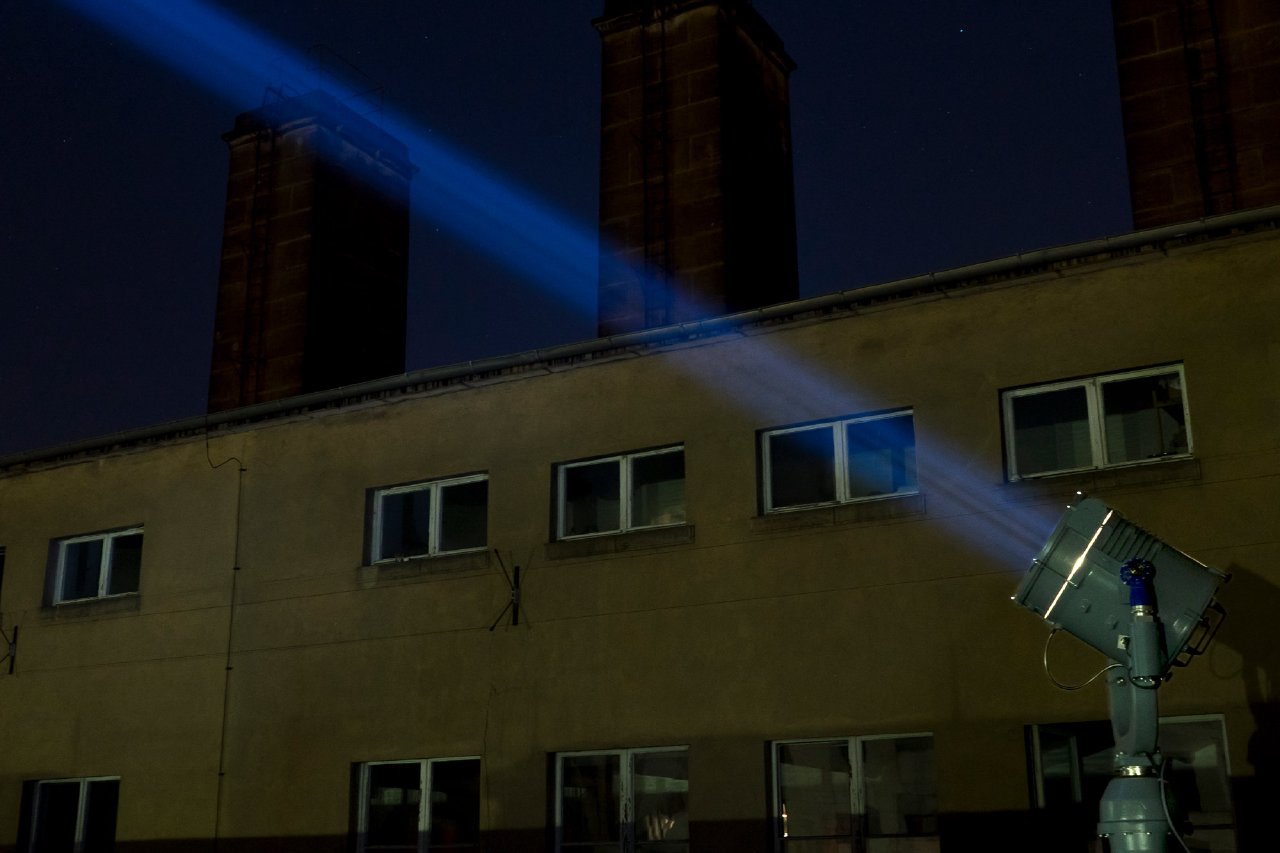


Every evening near Alexanderplatz one ray of sunlight shines fleetingly into the dark sky. The appearance of this phenomenon coincides with local noon on the exact opposite side of the planet longitude -166.59. The sunray slips through an imaginary slit in Earth’s blue sphere, reappearing to reach out into the middle of the Berlin night.
The artwork One Sunray through the Earth is inspired by astronomical instruments that connect the earth to the sky. It makes use of calculations and observations acquired over the centuries by great astronomers. However, the artwork twists the observation point around. It is not an instrument to study the sky, but rather it uses the sky to bring the attention back to Earth and to remind us playfully of our modest position in the solar system.
see onesunray.earth for more information
Every evening near Alexanderplatz one ray of sunlight shines fleetingly into the dark sky. The appearance of this phenomenon at latitude 52.52, longitude 13.41 (at Alte Münze) coincides with local noon on the exact opposite side of the planet: longitude -166.59. The sunray slips through an imaginary slit in Earth’s blue sphere, reappearing to reach out into the middle of the Berlin night.
The sunray beams daily at a slightly different time in the evening (in the calendar it is possible to check the correct time). This happens due to two main reasons: firstly because the path of the earth around the sun is not a perfect circle but an ellipse, and secondly because the earth is tilted. This tilting can be discovered by observing the sunray over the months; its declination changes according to the earth’s revolution around the sun.
Each day actually has a slightly different duration from the next one: the solar day is not 24 hours long every day. The actual duration ranges from about 23 hours and 45 min to 24 hours and 16 min. 24 hours is the duration of the mean day, calculated thanks to the equation of time, so that throughout the year each day lasts the same. The mean day makes it easier to build clocks and calendars. It is a standard. The construction of the temporal pattern called UTC (which uses the second unit as a basis in order to design a similar day to the solar day) is nowadays often confused as the reality of time: a day lasts 24 hours is a statement. On second thought though, the duration of a day is just a matter of perspective. It can be the duration between two sunrises, the duration between two passages of the sun on the local meridian, or 86,400 seconds ticking or more precisely about 7.94243384928e14 cesium transitions, as measured in the standard atomic clocks.
Over millennia humans of every culture have been looking at the sky, studying the movement of stars. Archeoastronomy is a discipline that researches how people in the past have understood and applied their learning of phenomena happening in the sky to their culture. It researches monuments and architectures that were built in relation to the movement of celestial bodies. A famous example of archeoastronomy is the New Grange Chamber, in Ireland: the entrance of this prehistoric monument is aligned with the rising sun on the winter solstice. Therefore, for approximately 13 days annually around the solstice period, the sunlight shines through an opening over the entrance for about 15 minutes and illuminates the inner chamber.
Our society has been building monumental observatories and huge telescopes placed in deserted landscapes on the earth, or sent them into space, like the Hubble telescope which delivers images of distant galaxies. Over the centuries people have built different kind of instruments so as to be able to observe the sky and understand the mechanics of the universe. Sometimes the discoveries were mixed into religious and mystical beliefs, but nevertheless their scientific accuracy is remarkable. We are still learning from the sky and we will probably never stop researching it.
The artwork One Sunray through the Earth is inspired by such astronomical instruments that connect the earth to the sky. It makes use of calculations and observations acquired over the centuries by great astronomers. However, the artwork twists the observation point around. It is not an instrument to study the sky, but rather it uses the sky to bring the attention back to Earth and to remind us playfully of our modest position in the solar system. By showing us that the day is a construct, and that the belief of it being always of the same duration is an illusion, the installation might let us feel the day differently. Its duration and organisation on a daily basis might be rather a personal choice, a decision on how to design the day. Throughout history we have been describing it in so many ways by using astronomic observation, oscillations of pendulums and then atoms, that still today we could simply choose which one is the most suitable. Time is a malleable phenomenon, we bend it with feelings and perceptions, but also we observe its malleability in nature due to the tilting and revolution of the earth.
By observing the sky, we have learned that even things we take for granted are not necessarily such: the earth is not flat and in the center of the universe, the sun is not orbiting the earth and the day doesn’t always last 24 hours. Reality is not always what it seems to be.